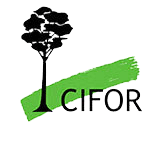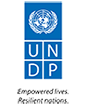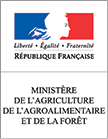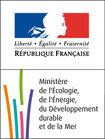Land use change, deforestation and agricultural production represent a fourth of global GHG-emissions, and a third of achievable global mitigation by 2030. This session will discuss how remote sensing and land use modeling can help REDD+ countries set their emission targets, present statistically convincing results and assess the impact of different policy options on land use change. Land use models can support countries in taking account of agricultural and other demands for land for achieving their Intended Nationally Determined Contributions (INDC’s):
- Up-to-date forest maps combined with higher quality spatial information provide new opportunities to make early assessment of the efficiency of REDD+/AFOLU activities.
- Understanding the range of impacts that land use policies have on agricultural production (SDG 2), trade, landscape restoration, emissions and biodiversity can help developing effective policies which not only reduce emissions but also contribute to sustainable use of terrestrial ecosystems, sustainable management of forest and biodiversity (SDG 15).
Though REDD+ relies on IPCC guidance on measuring and reporting forest emissions, the framework decisions leave wide margins of interpretation to REDD+ countries and sponsors as regards the definition, and acceptable levels, of uncertainty. Yet in practice, MRV systems need to provide reasonable assurance that reported trends in emissions are statistically meaningful.
The review process built in the Warsaw Framework ensures that 1) the data provided enable the understanding of proposed Reference Levels (baseline forest emissions, of FREL), and 2) the methods used for MRV are consistent with methods used for setting the FREL. The definitions of land categories or activities, the validity of underlying assumptions, and the methods (quality assessment of input data, choice of tiers, approaches, quantification of uncertainty and propagation of errors) are not exposed to the scrutiny of reviewers.
How much is enough to convince tax payers and investors that forest mitigation is as trustworthy as other mitigation options? What are the key factors to help transparency and comparability of estimates? Where can we improve in the next 5 years?
1) Predicting deforestation and degradation from early warnings, using roads as a proxy. Roads and other infrastructure accelerate deforestation and forest degradation in tropical areas. How do accessibility and fragmentation affect tropical forests and their biodiversity? Can accessibility be used to qualify trends in historical forest emissions and set better FRELs?
2) New tools, new opportunities, new challenges. Improved global datasets, higher resolution satellite data and high performance processing create an unprecedented opportunity to enhance our understanding of forest dynamics, and the potential for restoring degraded lands. But long term forest monitoring requires consistent time series and application of methods. How to ensure forward compatibility of current methods? How do we reconcile diverging approaches while encouraging countries to improve over time?
3) How can we best anticipate and influence agricultural drivers? Land use models representing driving forces can support the formulation of emission reduction and conservation policies and support landscape scale planning. Different teams working at the science-policy interface are using these approaches to assess policy options and their effects on land cover and land use on production, emissions and biodiversity, before their implementation. However, policy and planning decisions are often subject to political and other constraints and agendas. This session will explore the interactions between different sectoral policies including REDD+ policies, agricultural intensification, zero deforestation commitments, international trade agreements and reforestation initiatives in Brazil, the Congo Basin, and Indonesia.
Key questions addressed
- How can land-use change monitoring and modeling support land use policies that balance the needs for environmental conservation and production in the land-based sectors?
- How does such monitoring and modelling inform Policy Options for the World’s Forests in Multilateral Environmental Agreements? How “uncertain” are forest ER compared to fossil ER?
- What are the important interactions between different sectoral policies including agricultural intensification, zero-deforestation commitments, reforestation initiatives and REDD+ policies?
- Which lessons can we learn from test cases and land use models in tropical regions about the options and constraints for implementing REDD+? Where can we improve?
- What are requirements for the independent, transparent, reliable and trustworthy monitoring of land and carbon resources at different levels and for different users?
Background reading
A global strategy for road building
Policy Options for the World’s Primary Forests in Multilateral Environmental Agreements
Synergies between REDD+ and Biodiversity targets in Central Africa







































